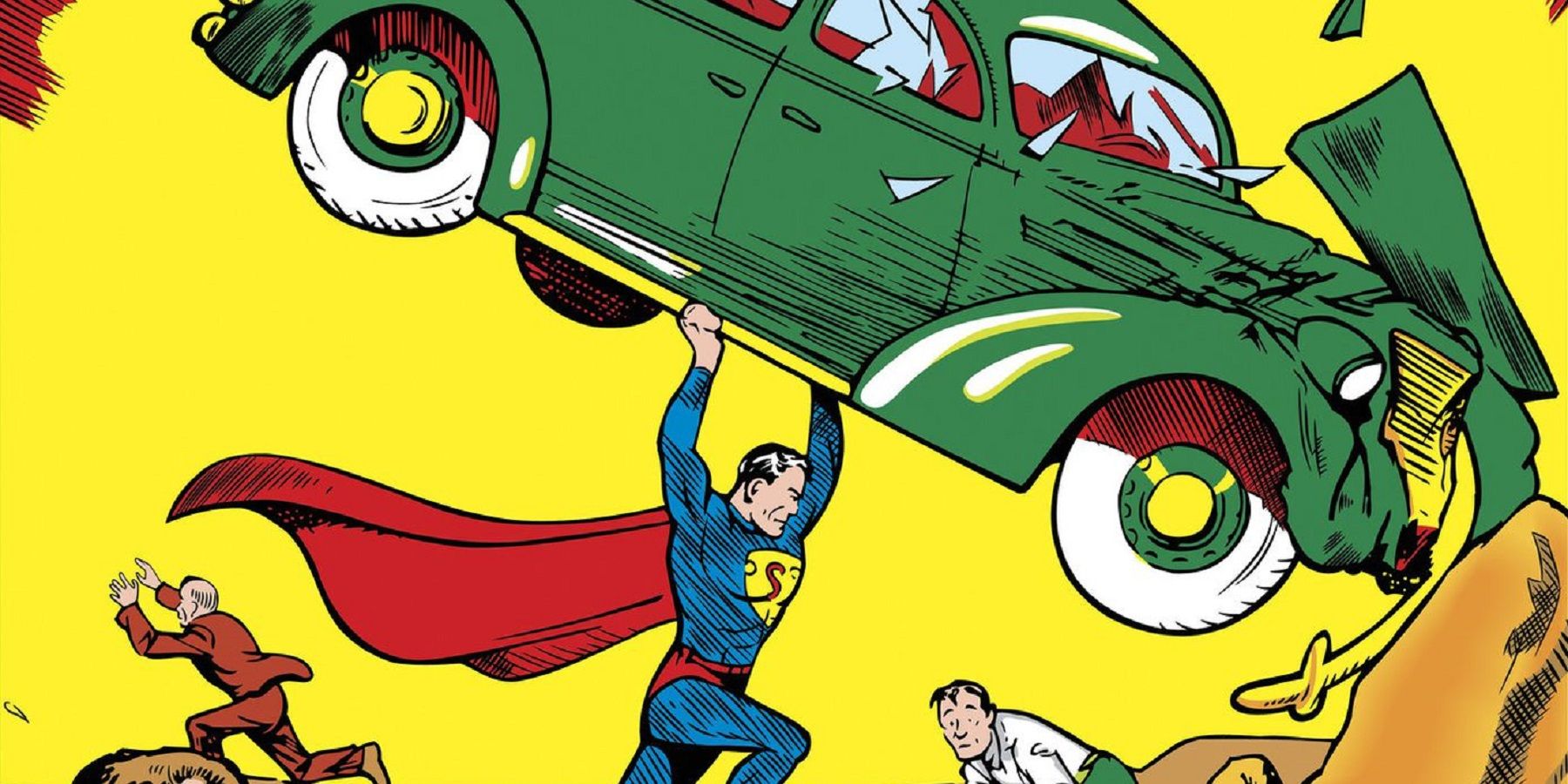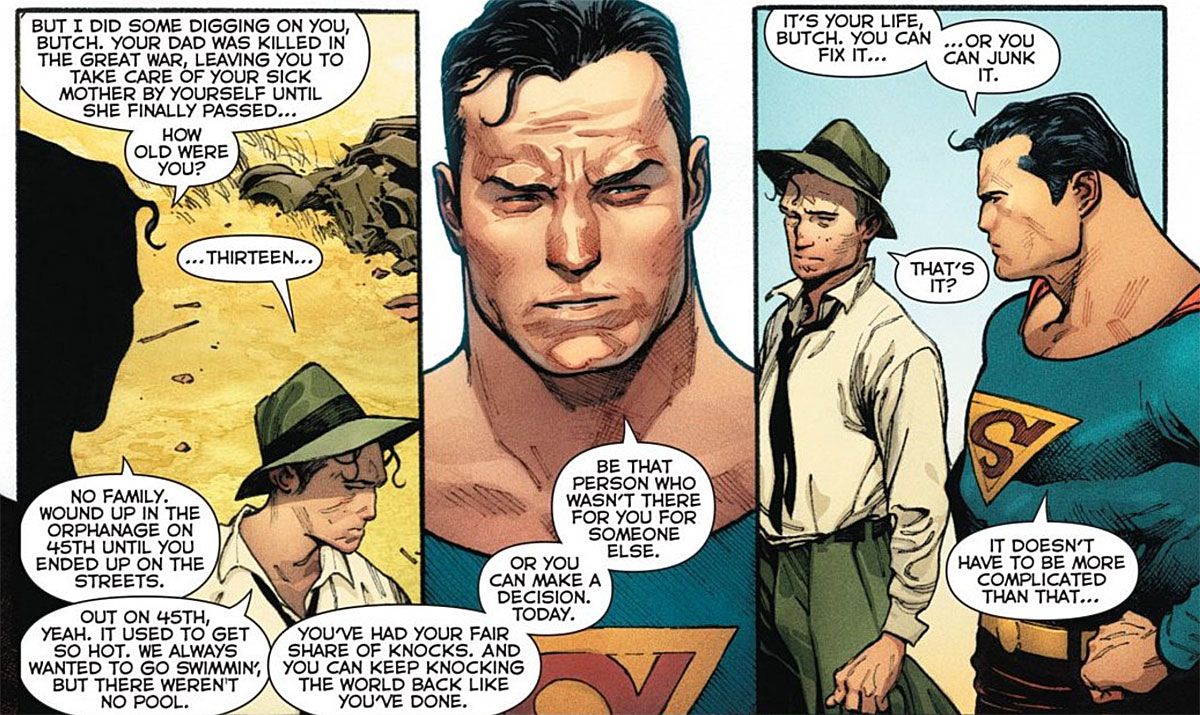SPOILER WARNING: The following article contains spoilers for "The Car" in Action Comics #1000 by Geoff Johns, Richard Donner and Olivier Coipel, on sale now.
No one can ever forget Butch Matson, right?
Superman sure didn't forget the tough guy who tried to muscle in on Clark Kent's date with Lois Lane before kidnapping her. The Man of Steel responded by rescuing Lois, trashing Butch's car, and punitively hanging the interfering Butch from the top of a telephone pole.
If that incident sounds familiar, that's because it was part of Superman's very first adventure as told 80 years ago by Jerry Siegel and Joe Shuster in Action Comics #1. But it begs the question, whatever happened to Butch – did he live out his remaining days as a decoration, hanging out high above with the pigeons? Action Comics #1000 finally provides the answer to a decades-old question that few ever thought to ask, in a short story by Geoff Johns, Richard Donner and Olivier Coipel simply and appropriately titled "The Car."
The car, of course, is the DeSoto owned by Butch that falls victim to Superman's wrath, as seen in the now-iconic cover that served as the Man of Steel's very first appearance. In "The Car," Butch has managed to free himself from his perch atop the utility pole, make his way down, and get his inoperable car towed to a nearby collision shop. The disbelieving mechanic dismisses Butch's explanation of the vehicle's damage as drunken rambling, adding that the car probably isn't worth fixing. A dejected Butch leaves the shop, only to find Superman again waiting for him.
RELATED: DC Reveals Details for Action Comics #1001 and Superman #1
Superman is looking to put Butch in his place – not back atop a telephone pole (which he had intended to free him from), but instead calling him out as the bully he is. But Supes has also dug up some backstory on Butch, learning that the seeming lowlife has led a difficult life, orphaned at an early age and forced into a life of hardship. Superman also has a challenge for him, telling Butch that he can either fix his life, or continue down the path he's on – implying that the latter might mean another eventual unpleasant encounter between the two.
Within the span of a few panels, Butch's decision is revealed to close out this motivational story. Rather than continue down his thuggish path, Butch is seen – with his newly repaired DeSoto – doing right by the children in his old neighborhood.
While likely to soon return to obscurity, Butch Matson will forever hold a notable distinction in the Superman mythos. If nothing else, he remains the Man of Steel's first named adversary. More importantly, though, is that Butch's chosen path was one that cemented the persona of Superman as an inspirational role model. Butch was never identified as a villain, per se, but he nonetheless was the first character to be inspired by Superman to change his ways for the better.
For all his superpowers – most of which hadn't been explored in his first appearance – Johns and Donner's story shows that Superman's greatest power isn't his ability to leap tall buildings or display super strength. His true strength isn't in his capacity to stop locomotives, it's in his power to instill good – to make all of us want to be a little better. Or a lot.
After all, had Butch pushed any of us around, most of us probably would have just left him hanging there.



